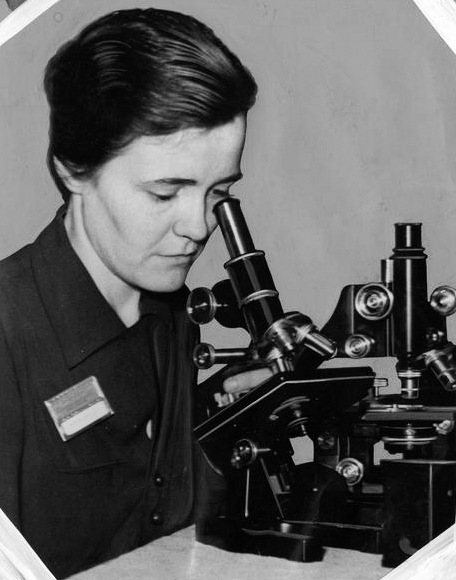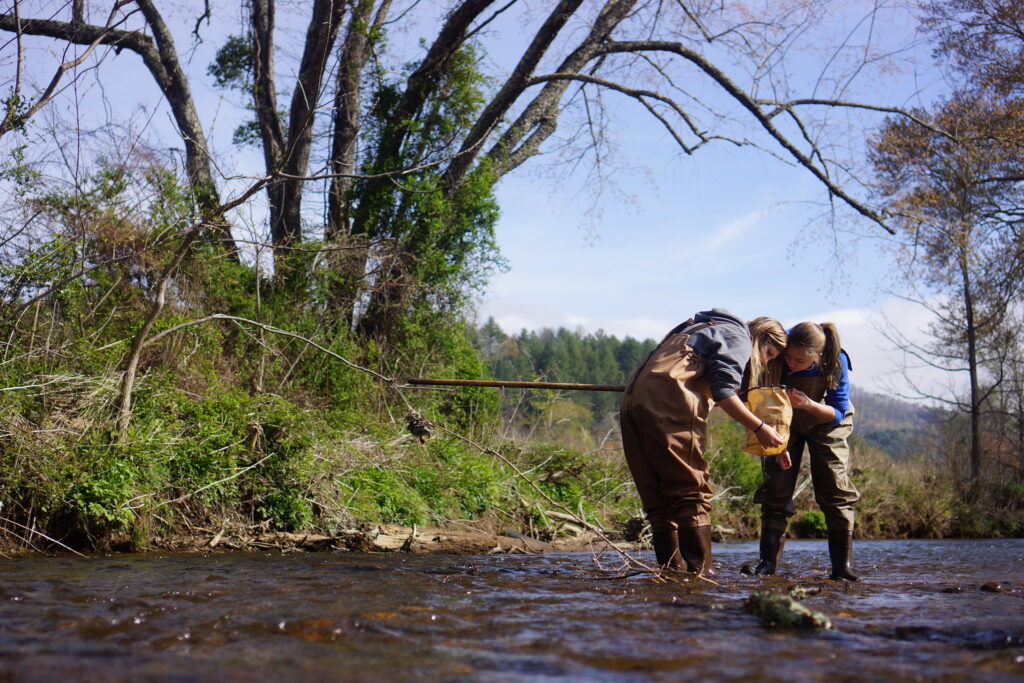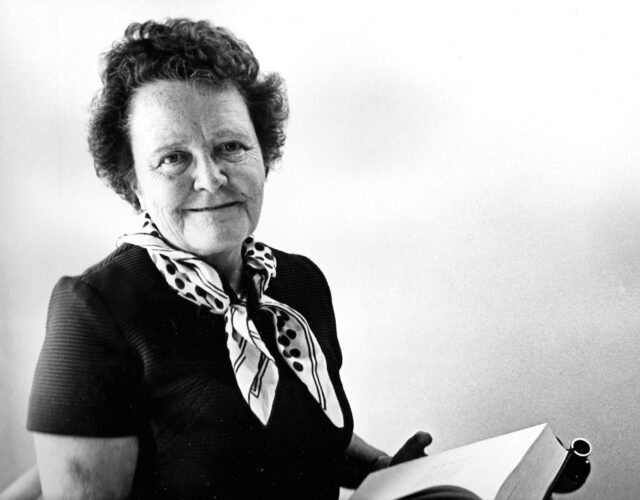In the first decade of the 20th century, two botanists working with the royal water-testing establishment in Berlin are scouring ditches, ponds, and streams across Rhineland. Their names are Richard Kolkwitz and Maximilian Marsson, and they’re looking for anything living in these waterways. In polluted areas and bodies of water low in oxygen—the polysaprobic areas, as the two men call them—they find few specimens large enough to observe with the naked eye. Insect life is somewhat more prolific in less-polluted zones, though most of it is a slew of midges and flies.
But in the clear and unpolluted waters, Kolkwitz and Marsson uncover a wonderland of insects—beautiful demoiselles and azure damselflies, mayflies, stoneflies, and caddis flies, broad-bodied chasers and brown hawker dragonflies, true bugs and backswimmers, and all sorts of aquatic beetles, from the common whirligig to the great diving beetle—all passing the larval time of their life in the sedimentary depths of these clean Rhineland streams. In 1908 Kolkwitz and Marsson publish their findings, noting a correlation between a stream’s health and the diversity of species found within it.
On the other side of the Atlantic, one-year-old Ruth Myrtle Patrick is just beginning to discover the natural world.
As soon as Ruth can walk, her father brings her and her sister on his weekly walk through the woods and neighborhood park near their Kansas City, Missouri, home. They collect ferns, flowers, snails, nuts, and worms. Ruth’s father, a lawyer by profession and botanist by preference, carries a tin can fastened to a pole and uses it to scrape the rocks lying in the stream; he transfers his catch to a glass tube so he and his daughters can study it later under a microscope. When Ruth is seven, her father gifts her with her first microscope. It’s the start of a lifelong passion for uncovering the secrets of aquatic life.
Two decades later, but still scraping the bottoms of streams, Patrick will take Kolkwitz and Marsson’s findings and begin to show that the correlation between the health of waterways and the health of the aquatic fauna within them can be more than an idle observation: tracking the life in streams can be the key to measuring pollution.
Patrick had the advantage of a supportive father keen to see her attend graduate school, but she was pursuing a life in science at a time when women were often lucky to finish high school. “Women were assumed to be inferior, mentally as well as physically, and thus incapable of intellectual achievement,” Patrick later told an interviewer.
Patrick would prove herself to be more than capable. During college, she spent her summers in labs at Cold Spring Harbor Laboratory and Woods Hole Oceanographic Institution, where she met Ivey Lewis, the foremost algae researcher in the country, who invited her to join his graduate program at the University of Virginia. She received her doctorate in botany in 1934 at age 26.

By that point Patrick had married and moved to Philadelphia, but as a woman she found her path to a university-based research job blocked. Instead she continued her research at the Academy of Natural Sciences while working as a volunteer curator. It took the academy more than a decade to put her on the payroll.
In 1946 she gave the talk that marked the turning point of her career. Speaking at a meeting of the American Association for the Advancement of Science, she showed how species of diatoms, a type of algae that make their own silica armor, could be used to judge water health. Given that different species of diatoms tolerate different amounts of pollution, one could determine the health of a stream by determining the specific species of diatom found within it.
With this discovery, Patrick bridged the gap between theory and practice—that is, the difference between Kolkwitz and Marsson’s observations and the ability to solidly identify stream health based on the abundance and variety of aquatic species. William B. Hart, an influential toxicity expert and official with Atlantic Refining Company who attended Patrick’s talk, recognized the potential of her work.
Since the late 1800s, the Atlantic Refining Company and other oil companies had been facing increasing scrutiny for the pollution they produced. Overlooked leaks and spills contaminated water and ground alike. In some cases pollution in waterways got so bad it led to devastating fires. Hart served on a committee dedicated to keeping oil and oil products out of nearby surface water. He was well versed in water pollution and eager to see better means of measuring it.
With Hart’s influence and financial help, Patrick moved into a well-funded position at the Academy of Natural Sciences, despite protestations from the academy’s president, Charles Cadwalader, who was convinced that any woman in charge of a research team would do nothing but waste money.
Patrick and her team expanded their study to other aquatic life: bacteria, insects, invertebrates, crustacea, and fish. They found that many forms of aquatic life could be used to monitor an ecosystem’s health. Diatoms, though, continued to hold a special place in Patrick’s heart. “My diatoms,” she once said to an interviewer, “they’re small, but they’re lovely.”
Many limnologists and ecologists who picked up on Patrick’s ideas would fall for other kinds of life: macroinvertebrates, such as worms and insect larvae.
Some insect larvae cannot abide pollution. That’s because pollutants can have any number of environmental effects. They can, for example, change the physical characteristics of a streambed—anything from the water pH to the structure of a stream’s bed and banks—and thus the creatures that live in it. Pollutants can also cloud the water, which can increase levels of bacteria and viruses while stifling aquatic vegetation and the animals dependent on it. Pollution also lowers levels of dissolved oxygen in water, and that’s what macroinvertebrates are most useful for tracking.
Some macroinvertebrates, such as true flies, mosquitoes, and dragonflies, can get by in low-oxygen environments, but others that rely solely on gills to breathe, such as larval mayflies, stoneflies, and caddis flies, quickly suffocate. Patrick and other scientists realized that macroinvertebrates and diatoms could serve as a key puzzle piece in the larger picture of long-term water pollution. While chemical testing showed only the state of a stream at any one moment, studying its inhabitants could reveal a large swath of the stream’s life history. Biological evidence of the conditions an organism had lived through—or, better yet, what a community of diverse organisms had lived through over the course of a handful of years—could reveal details of a stream’s past, including its changing geography, whether its original source was seawater or freshwater, how it had been affected by radiation (both natural and otherwise) over time, how polluted it was, or how far along a stream might be in recovering from past pollution. By 1949 Patrick and her team had conclusively shown the link between biodiversity and stream health, which ecologist Thomas Lovejoy would later dub the Patrick Principle.

Painstakingly collecting insect larvae may sound dull, but Patrick’s life was punctuated with the occasional adventure. In 1959 she had a close call with a British navy ship after refusing to abandon her observations on the Lough Foyle, a river running through disputed territory between the Republic of Ireland and Northern Ireland. Patrick had floated a cork down the river to study its currents, but the sailors mistook the cork for the snorkel of an Irish Republican Army operative. “So you’re the lady who was going to blow up the Queen’s Navy,” an American ambassador later declared on meeting her.
Patrick racked up an impressive list of accomplishments over the course of her career, including the invention of a diatom detection device, dubbed the diatometer, which floated on water and carried microscope slides to collect diatoms. During a 1955 expedition to the Amazon River, she discovered that, while the same standards of diversity held true with those she had found in North America, the sum of tropical pools had far more species than the sum of temperate pools. Later she advised Presidents Lyndon B. Johnson and Ronald Reagan on water pollution and acid rain, respectively. In 1970, the year Earth Day was inaugurated, Patrick became the 12th woman elected to the National Academy of Sciences.
“My great aim,” Patrick told the Philadelphia Inquirer, “has been to be able to diagnose the presence of pollution and develop means of cleaning things up.” Patrick worked tirelessly toward this goal by identifying pollutants and their effects through her diatom research, and she was involved in the preliminary scientific discussions that led to the Clean Water Act of 1972.
By the end of her life Patrick had written or contributed to roughly 200 scientific papers. She worked five days a week at the Academy of Natural Sciences until the age of 97, and even after could regularly be found in her office working on her five-volume series, Rivers of the United States, which meticulously cataloged the hydrology, chemistry, and biology of every major river in the United States.
When asked on the eve of her 100th birthday what she thought of her legacy, Patrick, who was still publishing papers, replied that she preferred not to think about it. She would continue working until her death at the age of 105.
Ruth Patrick was not alone in her fight against water pollution, and that fight continues today. Resources for volunteer citizen monitoring can be found on the official sites for the Environmental Protection Agency and the National Water Quality Monitoring Council.




